#Ancient Roman coins
Explore tagged Tumblr posts
Text

Gold solidus of the Roman emperor Constantius II (r. 337-361 CE), minted at Thessalonica between 351 and 355. On the obverse is the bust of Constantius, wearing a pearl diadem and a cuirass with drapery atop it. On the reverse is the inscription GLORIA REI PUBLICAE above the enthroned personifications of Rome and Constantinople. Following his elimination of his last remaining rivals in 355, Constantius would greatly expand the senate of Constantinople and elevate the city to an administrative status equal to Rome's, including the appointment of an urban prefect (praefectus urbi) to govern it.
Photo credit: Classical Numismatic Group, Inc. http://www.cngcoins.com
#classics#tagamemnon#history#ancient history#Ancient Rome#Roman Empire#Roman history#late antiquity#Constantius II#art#art history#ancient art#Roman art#Ancient Roman art#Roman Imperial art#late antique art#coins#Roman coins#Ancient Roman coins#numismatics#Roman numismatics#goldwork#solidus
192 notes
·
View notes
Text

View of the Forum Romanum by Salomon Corrodi
#salomon corrodi#art#roman forum#forum romanum#rome#ancient rome#ancient roman coins#roman#antiquity#architecture#city#ancient#europe#european#history#italy#ruins#landscape
640 notes
·
View notes
Text

Roman Sestercius bearing the image of Britannicus (with Mars on the reverse). The coin was struck in the provinces during the reign of his father Claudius. He was born Tiberius Claudius Germanicus on the 12 of February, 41 just weeks after Claudius became the Roman princeps and he was renamed Britannicus after the conquest of Britain. After Claudius married Agrippina the Younger, Britannicus was sidelined in favour of his adopted brother Nero and he didn't long outlive his father. He died on the 11th of February, 55, just a day before his fourteenth birthday when he was supposed to assume toga virilis and so officially become an adult under the Roman tradition. Nero allegedly had him poisoned after Agrippina implied that he may be easily replaced with Britannicus as emperor.
#britannicus#ancient rome#roman empire#ancient history#roman coin#ancient roman coins#ancient culture#julio claudian dynasty#I think a lot of people don't realize how young Britannicus was when he died#poor fella
29 notes
·
View notes
Text

Roman Coin - Gold Aureus of Augustus C. 19 BC
Obverse: portrait of Augustus. Reverse: SIGNIS RECEPTIS. Mars, the god of war, holding a legionary eagle and standard, referring to the great diplomatic achievement, and morale boost for Rome, when Augustus managed to negotiate with the Parthian king the return of the battle standards lost in three earlier campaigns.
Caesar Augustus (born Gaius Octavius; 23 September 63 BC – 19 August AD 14), also known as Octavian, was the founder of the Roman Empire; he reigned as the first Roman emperor from 27 BC until his death in AD 14 The reign of Augustus initiated an imperial cult as well as an era associated with imperial peace, the Pax Romana or Pax Augusta, in which the Roman world was largely free of armed conflict aside from expansionary wars and the Year of the Four Emperors. The Principate system of imperial rule established by Augustus lasted until the Crisis of the Third Century.
#Roman Gold Aureus of Augustus C. 19 BC#coin#roman coin#ancient roman coins#ancient artifacts#gold#gold coin#collectable coins#archeology#archeolgst#history#history news#ancient history#ancient culture#ancient civilizations#ancient rome#roman histroy#roman empire#roman art#roman emperor#augustus#octavius
57 notes
·
View notes
Text
Ancient Roman Coins

The Ancient Roman Coins developed >1000 years of technology from basic bronze lumps of the 4th century BC to sophisticated plated metal alloys. The shift from Republic to Empire also saw a shift in the decoration and propaganda elements disseminated on coinage.
1 note
·
View note
Text
🏛️ Roman Coins - IMPACTO 🏛️
Unearth the rich history of ancient Rome through IMPACTO's remarkable collection of Roman coins! 🇮🇹💰 These ancient artifacts offer a fascinating glimpse into the once-mighty civilization that shaped the world as we know it today.

🔍 Discover Authenticity: IMPACTO takes pride in offering genuine Roman coins with verified origins. Each piece holds a story that has withstood the test of time, making it a valuable addition to any historical collection.
📜 Embrace History: Holding a Roman coin is like holding a piece of history in your hands. These coins were once used in bustling markets, exchanged by soldiers, and even adorned the pockets of emperors! It's a unique way to connect with the past.
💡 Educational Insights: Studying Roman coins can reveal insights into the empire's politics, culture, and artistic achievements. Share the excitement with students, friends, and family, and dive into the rich tapestry of the ancient world.
🔗 Connect with Heritage: Owning a Roman coin isn't just owning an artifact; it's a connection to your cultural heritage. It's a reminder of how far we've come and a tribute to the legacy of Rome's enduring impact on civilization.
🛒 Shop Responsibly: At IMPACTO, we prioritize ethical sourcing and adhere to stringent preservation practices. Our passion for history drives us to ensure these invaluable treasures are preserved for generations to come.
🌟 Join us in celebrating the grandeur of Rome through its captivating coins! Explore our collection today and embark on a journey through time.
0 notes
Text
Ancient Indian Coins of Foreign Rulers
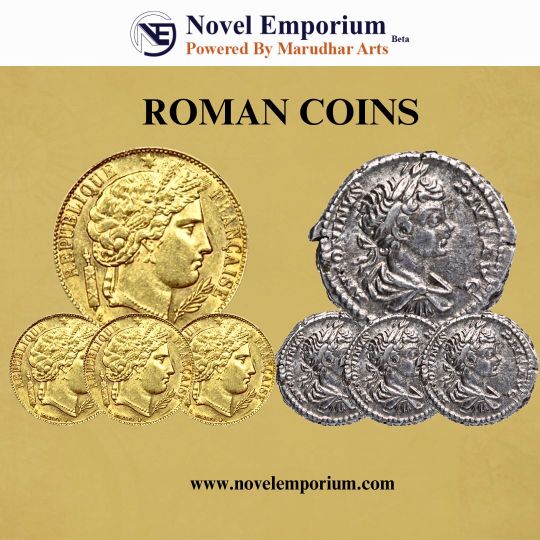
Introduction:
Ancient India is a land rich in history, culture, and diversity. Throughout the centuries, it witnessed the rise and fall of various empires, attracting foreign rulers from distant lands. One of the intriguing aspects of this period is the numismatic heritage left behind by these foreign powers. Coins minted by these rulers provide valuable insights into their reigns, their interactions with Indian society, and the fascinating blend of local and foreign influences. In this blog, we will embark on a numismatic journey, exploring the ancient Indian coins of foreign rulers and unraveling the stories they tell.
In ancient times, various foreign empires, such as the Romans, Portuguese, British Empire also ruled over India. During the Roman rule, they introduced their own coins for trade and commerce, known as Roman Empire coins. We possess a collection of currencies from different foreign kingdoms of Portuguese, British, Roman, and others. We have rare currencies and ancient coins such as the Silver Denarius in their period.
1.The Indo-Greeks: The Indo-Greeks were among the first foreign powers to establish their presence in India. Their coins, issued during the 2nd century BCE, serve as a testament to the cultural fusion that occurred during this period. We will delve into the designs, inscriptions, and artistic influences that characterize these coins, shedding light on the cross-cultural interactions between the Greeks and the Indians.
2.The Kushanas: The Kushan Empire, originating from Central Asia, had a significant impact on ancient Indian history. Their coins, minted from the 1st to the 3rd century CE, showcase a blend of Indian, Greek, and Persian artistic elements. We will examine the unique features of Kushana coins, such as the portrayal of rulers, deities, and the introduction of the Brahmi script.
3.The Indo-Scythians: The Indo-Scythians, also known as the Sakas, ruled parts of North India during the 1st century BCE to the 1st century CE. Their coins display a distinct Scythian influence while incorporating Indian motifs and deities. We will explore the fascinating iconography and historical context behind these coins, highlighting the cultural amalgamation that occurred under the Indo-Scythian rule.
4.The Gupta Empire: The Gupta Empire is often regarded as the Golden Age of ancient India. The Gupta coins, minted between the 4th and 6th centuries CE, exemplify the pinnacle of artistic and metallurgical achievements. We will analyze the intricate Gupta coinage, which features Gupta rulers, mythological figures, and elaborate inscriptions, and discuss its significance in the context of Gupta society and culture.
5.The Islamic Dynasties: With the advent of Islamic rule in India, a new chapter unfolded in numismatic history. Coins issued by various Islamic dynasties, such as the Delhi Sultanate and the Mughals, showcased a unique blend of Islamic calligraphy, Persian influences, and Indian artistic elements. We will explore the evolution of Islamic coinage in India and its role in shaping the socio-cultural landscape.
Importance of Ancient Indian Coins of Foreign Rulers:
1.Historical Documentation: Ancient coins provide valuable historical documentation about foreign rulers who held sway over different parts of Ancient India. These coins bear inscriptions, symbols, and portraits that help in identifying and understanding the rulers, their dynasties, and their political influence in the region.
2.Cultural Exchange: Coins issued by foreign rulers reflect the cultural exchange and interaction between Ancient India and other civilizations. They often incorporate elements of both the ruling civilization and the local Indian traditions, showcasing a fusion of artistic styles, religious symbolism, and linguistic influences.
3.Trade and Commerce: Coins played a vital role in facilitating trade and commerce in Ancient India. Foreign rulers minted their coins to assert their authority and facilitate economic transactions. The presence of foreign coins in Ancient India suggests the existence of trade networks and economic ties with other regions.
4.Economic History: The study of ancient coins provides insights into the economic history of Ancient India. The types of metals used, their purity, and the denominations reflect the prevailing economic systems, monetary policies, and the economic prosperity of the time.
5.Numismatic Research: Ancient coins serve as essential artifacts for numismatic research, which involves the study of coins. Scholars and collectors analyze these coins to determine their minting techniques, metal compositions, and design evolution over time. Such research contributes to a deeper understanding of ancient technology, craftsmanship, and artistic traditions.
6.Preservation of Heritage: Ancient coins are invaluable archaeological artifacts that preserve the heritage of Ancient India. By studying and preserving these coins, we can gain insights into the social, political, and economic structures of ancient societies, helping us reconstruct and appreciate our historical roots.
7.Educational and Cultural Value: Ancient coins have educational and cultural value. They provide a tangible connection to the past, allowing individuals to learn about and appreciate the history, art, and cultural diversity of Ancient India.
Advantages of Ancient India Coins of Foreign Rulers:
1.Historical Significance: Coins issued by foreign rulers in Ancient India provide valuable historical evidence about the political, cultural, and economic interactions between India and other regions. They offer insights into the periods of foreign rule and their impact on the Indian subcontinent.
2.Numismatic Value: Ancient coins, especially those from foreign rulers, have high numismatic value. Collectors and enthusiasts often seek out these coins for their rarity, craftsmanship, and historical significance. They can be valuable additions to coin collections and can appreciate in value over time.
3.Cultural Exchange: Coins from foreign rulers reflect the influence of different cultures and civilizations on Ancient India. They often feature unique designs, symbols, and inscriptions that represent the artistic traditions and ideologies of the ruling empire. They provide a glimpse into the diverse cultural heritage of the time.
4.Trade and Economic Relations: Coins issued by foreign rulers can offer insights into the trade and economic relations between Ancient India and other regions. They can provide information about the circulation of different currencies, the prevalence of specific trade routes, and the economic policies of foreign powers.
Disadvantages of Ancient India Coins of Foreign Rulers:
1.Loss of Sovereignty: Coins issued by foreign rulers signify a period of foreign domination and loss of political autonomy for Ancient India. They remind us of the subjugation and control exerted by outside powers, which can be a sensitive topic for some individuals or communities.
2.Fragmented History: Ancient coins, including those of foreign rulers, often present a fragmented historical narrative. They provide glimpses into specific rulers or periods but may not offer a comprehensive understanding of the broader historical context or the experiences of the local population.
3.Limited Information: While coins can provide valuable historical information, their inscriptions and designs may not always reveal detailed or complete information about the ruler, the ruling empire, or the events of the time. Some coins may lack inscriptions altogether, making their interpretation challenging.
4.Lack of Preservation: Ancient coins face the risk of damage, deterioration, and loss over time. Due to their age and historical significance, it can be difficult to preserve and protect these coins adequately. This poses a challenge for historians, archaeologists, and collectors interested in studying or appreciating them.
Conclusion:
Ancient Indian coins of foreign rulers provide a glimpse into the multicultural tapestry of India's past. From the Indo-Greeks to the Islamic dynasties, each coinage reflects the dynamic interplay between different civilizations, religions, and artistic traditions. By studying these numismatic artifacts, we gain a deeper understanding of the historical, cultural, and economic interactions that shaped ancient India.
#Roman Empire Coins#Silver Denarius Coins#Rare Roman Currency Coins.Silver Denarius Coins#Rare Roman Currency Coins#Ancient Roman Coins#Ancient Roman Denarius Coins#Denarius Coins#Roman Currency Coins.
0 notes
Text


~ Head of Pan to the left (Coin).
Date: ca. 350 B.C
Mint: Pantikapaion
Medium: Gold
#ancient#ancient art#history#museum#archeology#ancient history#archaeology#roman#numismatics#coin#greif#pan#corn#pantaka#Pantika#Pantikapaion#gold
1K notes
·
View notes
Text

Golden aureus of Marcus Aurelius, Rome, c. 171-172 CE. British Museum (ID: R.12617)
#ancient history#archaeology#art history#roman empire#hellenism#roman art#ancient rome#numismatics#ancient art#roman coin#marcus aurelius
163 notes
·
View notes
Text


Roman Coin Hoard, Trimontium Museum, Melrose
#romans#roman empire#roman wealth#Roman living#roman#roman coins#roman fort#roman soldiers#ancient cultures#ancient living#ancient trade#coin hoard#trimontium#melrose#archaeology#coins#symbols#design
303 notes
·
View notes
Text

#hermes worship#hermes#mercury#hermes god#ancient greek god#greek god#coin#greek myth#greek myth art#ancient greek mythology#greek mythology#ancient greek coin#roman coin#medieval coin
2K notes
·
View notes
Text

Denarius of the Roman emperor Hadrian (r. 117-138 CE), minted between 119 and 122. On the obverse, the bust of Hadrian. On the reverse, the personified goddess Roma, seated. Roma holds a spear in her left hand and a small, winged Victoria (Victory) in her right; beneath her is a cuirass, and behind her a shield. The inscription around her reads P(ONTIFEX) M(AXIMUS) TR(IBUNICIA) P(OTESTATE) COS III. This coin was found in North Yorkshire, England, UK, and is now in the British Museum.
Photo credit: Amy Downes on behalf of the West Yorkshire Archaeology Advisory Service/The Portable Antiquities Scheme/The Trustees of the British Museum.
#classics#tagamemnon#history#ancient history#Ancient Rome#Roman Empire#Hadrian#Roman Britain#art#art history#ancient art#Roman art#Ancient Roman art#Roman Imperial art#Roman religion#coins#ancient coins#Roman coins#Ancient Roman coins#numismatics#ancient numismatics#denarius#British Museum
45 notes
·
View notes
Text


Silver coin of Mark Antony
Roman period ca. 40-31 BC
Drachm of the Roman General and Triumvir Marcus Antonius from Antiochia ad Orontem.
Obv. Bust of Mark Antony facing right. Rev. Head of Tyche facing right Inscribed, ΑΝΤΙΟΧΕΩΝΜΗΤΡΟΠΟΛΕΩΣ (of the metropolis of the people of Antioch)
The mint of Antioch produced a drachm coinage in its own name, but with a portrait of Antony on the obverse. On the reverse appeared the head of Tyche with the legend 'of the metropolis of the people of Antioch'. The date of the issue cannot be determined with precision. In concept, this coinage is analogous to, though of higher value than, the city bronze coinages with Antony and Cleopatra's portraits.
from The British Museum
#mark antony#marcus antonius#roman history#numismatics#silver coins#ancient coins#ancient art#antiquities#antiquity#ancient artifacts#british museum
121 notes
·
View notes
Text
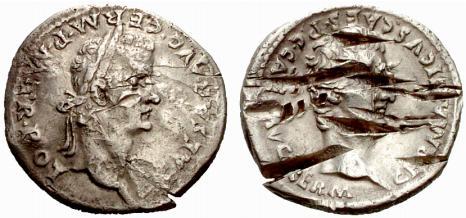


An example of the Damnatio Memoriae decreed on Gaius Caligula on the coins bearing his image. Many of Caligula's coins were withdrawn after his murder and restruck, while others were defaced. Damnatio Memoriae didn't mean that all the traces of the individual were erased, only the ones that showed him in a positive light.
#ancient rome#caligula#emperor gaius#gaius julius caesar germanicus#coins#ancient coins#damantio memoriae#ancient roman coins#julio claudian dynasty
67 notes
·
View notes
Text
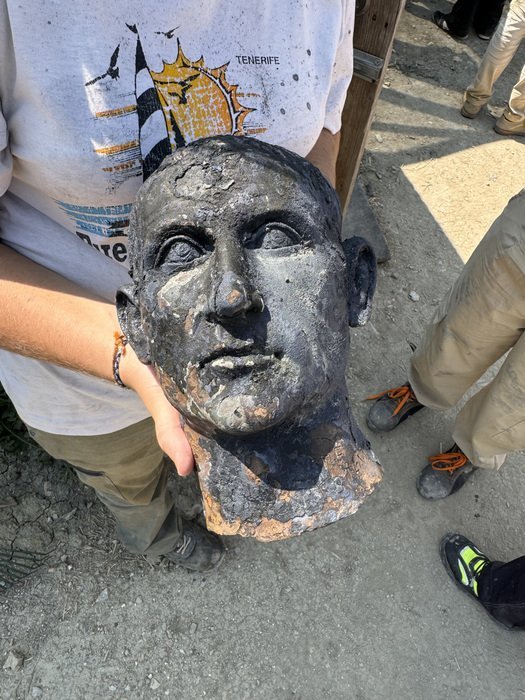

Bronze Statues and Coins Found at Ancient Sacred Bath in Tuscany
Archaeological excavations at the Bagno Grande sanctuary in San Casciano dei Bagni, Tuscany, Italy, have uncovered a wealth of artifacts that highlight the Etruscan-Roman heritage of this ancient thermal site.
Dating back to the 3rd century BCE, the sanctuary was originally constructed by the Etruscans and later developed by the Romans into the renowned spa complex, Balnea Clusinae. Revered for its therapeutic hot springs, the site attracted visitors from across the Roman Empire, including Caesar Augustus.
The recent excavation, spanning June to October 2024, focused on the sacred temenos, a walled enclosure surrounding the sanctuary, and revealed the remnants of a central temple built around a thermal water basin. Within this sacred space, archaeologists unearthed an array of votive offerings and artifacts remarkably preserved by thermal waters and clay.
Among the most notable finds are four bronze statues, votive limbs, and heads, inscribed with dedications. A striking bronze torso, bisected from neck to genitals, was dedicated by a man named Gaius Roscius to the “Hot Spring.” Researchers suggest this statue symbolizes the healing of specific ailments. Other discoveries include a child statue portraying an augur priest holding a pentagonal ball, likely used in divination rituals, and elegant votive heads inscribed in Latin.
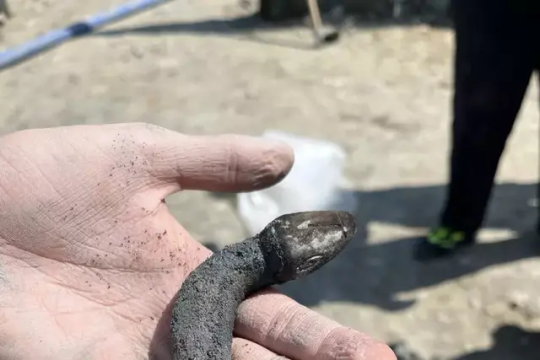
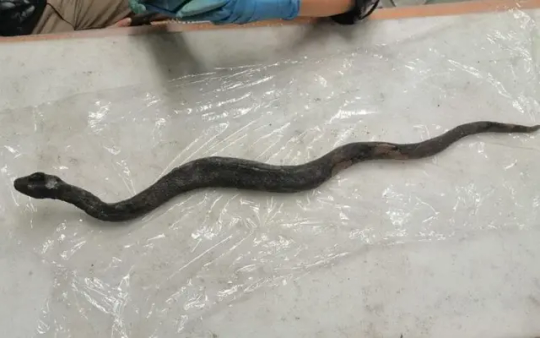



Inscriptions in both Etruscan and Latin were uncovered, including dedications to the Nymphs and the thermal spring, referred to as “Flere Havens” in Etruscan, and oaths to Fortuna and the Genius of the Emperor.
The sacred basin contained a diverse range of offerings, including oil lamps, glass unguent jars, painted terracotta anatomical votives, and coins—more than 10,000 spanning the Roman Republic to the Empire. Precious metals, such as a gold crown and ring, Roman aurei, and fragments of amber and gemstones, were also uncovered. Notably, the presence of preserved eggs, some with intact yolks, suggests rites symbolizing rebirth and regeneration.





Decorative elements such as pinecones, branches, and bronze serpents—one nearly a meter long and thought to represent the Agathodaimon, a protective spirit—emphasize the connection between the rejuvenating waters and nature’s generative power.
Efforts are underway to preserve these extraordinary finds. The National Archaeological Museum of San Casciano dei Bagni is being established in the Archpriest’s Palace to house the artifacts, while a thermal archaeological park is planned around Bagno Grande to promote cultural tourism.
By Dario Radley.

#Bronze Statues and Coins Found at Ancient Sacred Bath in Tuscany#Bagno Grande sanctuary in San Casciano dei Bagni#Balnea Clusinae#roman coins#ancient coins#bronze#bronze statues#bronze sculpture#ancient artifacts#archeology#archeolgst#history#history news#ancient history#ancient culture#ancient civilizations#roman history#roman empire#roman era
548 notes
·
View notes
Text

A Tale of Two Coins - 2000 years apart!
On the right is a Judea Capta coin from 71 AD, 1952 years ago. The coin says “Judea conquered" in latin. These were commemorative coins originally issued by the Roman Emperor Vespasian to commemorate the capture of Judea and the destruction of the Jewish Second Temple by his son Titus in 70 CE during the First Jewish Revolt. On one side of the palm tree is a weeping defeated Jewish woman. On the other a victorious Roman soldier.
On the left, we see the same palm tree representing the Jewish homeland, but instead of a Roman soldier, there is a Jewish woman holding a baby up to the heavens symbolizing the rebirth of the Jewish people like a phoenix out of the ashes. In place of the weeping woman is a Jewish farmer (her husband) planting new roots for the Jewish people in the Jewish homeland. Instead of “Judea Capta'' the words read - “Israel Liberated 1948″.
These two coins sum up the history of exile and return of the indigenous Jews to the Kingdom of Israel.
In the prophetic words of the Bible: “They who sow in tears shall reap in joy.” (Psalm 126)
#secular-jew#israel#jewish#judaism#israeli#jerusalem#diaspora#secular jew#secularjew#islam#coins#ancient coins#judean coinage#judea#samaria#romans#judea capta#vespasian#titus#emperor#roman empire#Israel liberated#1948#hamas#coinage#second temple#1st century#palestine#Palestinian#gaza
384 notes
·
View notes